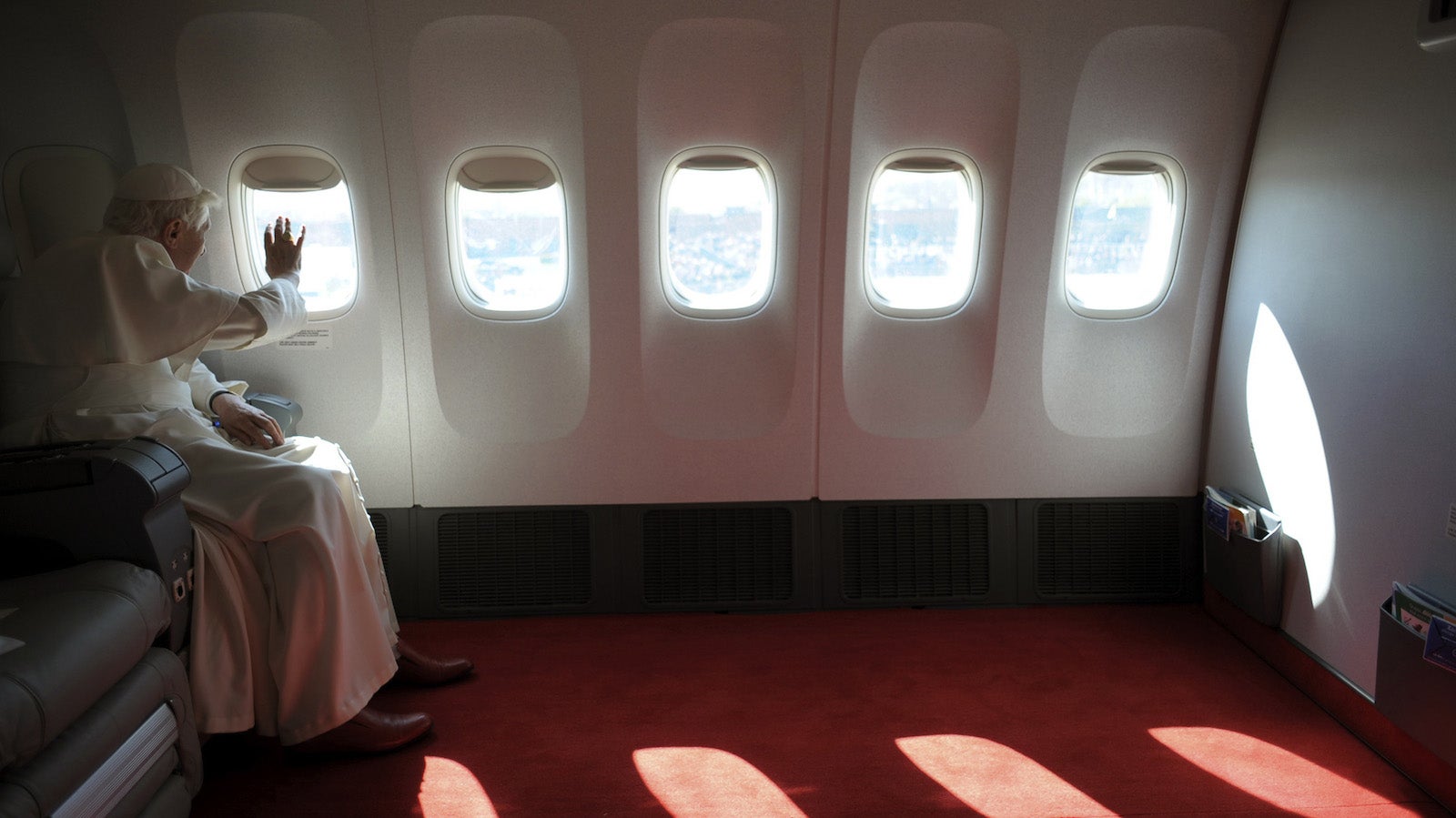This is why you’re afraid of flying—and how to get over it
It’s perfectly reasonable to be afraid of flying. According to several studies, even pilots get flight anxiety.


It’s perfectly reasonable to be afraid of flying. According to several studies, even pilots get flight anxiety.
Some fearful fliers are concerned about the safe arrival of the plane. Others are not afraid the plane will crash; they fear “crashing” psychologically. They are afraid they will have a panic attack in an environment where they have neither control of the situation, nor any means of emotional relief.
Paradoxically, it is cruising—the safest part of the flight—that causes the greatest psychological stress.
At cruising altitude, of course, the plane is far from the ground, and thus far from your most logical escape route. But it’s also when passengers are most likely to encounter turbulence. Most of us know we can keep anxiety about flying at bay if we stay occupied. When the flight is smooth, the anxious flier might accomplish this by focusing on a book, music, or a movie. But when the plane feels like it is falling, even for a momentary jolt or drop, stress hormones are released. These hormones force us to pay attention to danger—in other words, to notice that we’re suspended 30,000 feet in the air.
In turbulence, a plane might drop again and again. Each drop triggers its own shot of stress hormones, causing stress to build up. As stress levels rise, cognitive ability declines. Without you being aware of it, your ability to discern and test reality fades or become completely disabled. In this state you might begin to believe the turbulence you are experiencing is not, in fact, normal. In other words, it becomes possible to experience your plane falling out of the sky, even if it isn’t, and to panic accordingly.
It’s a self-reinforcing cycle. People with severe fear of flying will leave even a perfectly normal flight with the impression that they have survived a life-threating situation. That stress leaves its imprint on the brain’s stress system, and can condition you to associate flying with mortal danger. No matter how many good flights you subsequently have, you will feel anxiety before and during the flight.
The good news is, you can reverse this process. To combat fear of flying, or aviophobia, my fear-of-flight treatment program SOAR helps fliers to turn off their stress response when flying.
How do we shut the stress response down? We look for a source of oxytocin in the person’s interpersonal life. Oxytocin, also known as the “love hormone,” is well-known for inspiring feelings of trust and intimacy, and can interfere with your brain’s fear response.
Triggers for oxytocin release in females include nursing a child, seeing a newborn for the first time, good sexual chemistry, and gazing into your dog’s eyes. In males, one reliable source of the love hormone, other than his dog, is an orgasm. So, in training, I direct men with a fear of flying to recall a moment of sexual afterglow. I ask the client to imagine his partner’s face, touch, and voice, all of which are already strongly associated with oxytocin production.
With oxytocin circulating in the brain, the amygdala—regardless of what it has learned to perceive as danger—is kept from releasing stress hormones. Thus, by consciously linking various moments of the flight experience to an oxytocin-producing moment, we can keep the brain’s fear system shut-down during flight. This can also be applied to non-flying situations.
Fear of flying, and flight-related demand for anti-anxiety medication, often seem to increase after plane crashes make it into the news. In particular, the Malaysia Airlines flight 370, which completely disappeared, continues to haunt people with a fear of flying because it lacks closure. I’ve heard my clients say, “Unless that plane is found, I’m never flying again.”
I believe that the Germanwings flight 9525, which crashed Mar. 24 in the French Alps, will be accepted more easily. Why? It has a fix, and the fix is already in place in the US. When a pilot needs to leave the cockpit, protocol calls for a flight attendant to enter the cockpit and remain inside by the door. This way, there are two people in the cockpit at all times, and if necessary, the flight attendant can open the cockpit door for the returning pilot.
Since these protocols will likely be put into place across Europe, the Germanwings crash may seem a less daunting worry. Anticipatory anxiety can be worse than flight anxiety; anything that rules out one more source of anticipatory anxiety—in this case, a change in protocol—goes a long way toward giving anxious passengers relief.
Given this year’s several highly-mediatized flying incidents, aviophobia should be more seriously discussed and treated. After all, anyone boarding a plane is putting their life in the hands of an unknown pilot and co-pilots, and giving up their ability to escape from the situation. They should know that there are ways to train the mind to inhibit its stress reaction, and to reliably control panic.
We welcome your comments at [email protected].